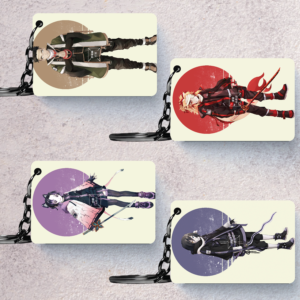Introduction
The Sangeet and Mehendi ceremonies hold a profound significance in Indian weddings, offering a vibrant celebration of music, dance, and tradition. These pre-wedding rituals are not only joyful occasions for the families to come together but also symbolize the rich cultural heritage of India. The Sangeet ceremony, filled with lively performances and musical festivities, brings a sense of unity and excitement among the guests, while the Mehendi ceremony, where intricate henna designs are applied to the bride’s hands and feet, signifies beauty, love, and auspiciousness. Together, these ceremonies create memorable moments that add depth and meaning to the wedding festivities, showcasing the colorful and festive spirit of Indian weddings.
History of Sangeet and Mehendi

The history of Sangeet and Mehendi in Indian weddings is a vibrant tapestry woven with traditions and cultural richness. Sangeet, a celebratory pre-wedding event, originates from ancient Indian customs where women would gather to sing folk songs, share stories, and dance in anticipation of the upcoming wedding. Over time, Sangeet evolved into a lively musical evening where both families come together to showcase their talents, perform traditional dances like Garba and Bhangra, and celebrate the union through music and dance. Mehendi, on the other hand, is an age-old tradition symbolizing love, beauty, and good fortune. The intricate designs applied to the bride’s hands and feet using henna paste not only serve as adornments but also carry cultural significance, with different motifs representing various aspects of life and marriage. Mehendi ceremonies are deeply rooted in Indian culture, often accompanied by singing traditional songs and applying herbal pastes for skin beautification. Together, Sangeet and Mehendi ceremonies embody the essence of joy, togetherness, and cultural heritage, adding color and vibrancy to Indian weddings while preserving age-old traditions.
Cultural Significance
Indian weddings hold immense cultural significance, representing a rich tapestry of traditions, customs, and rituals that have been passed down through generations. These weddings are not just about the union of two individuals but symbolize the coming together of families, communities, and often, even regions. From vibrant and elaborate ceremonies like the Mehendi, Sangeet, and Baraat to the solemn vows taken during the actual wedding ceremony, each aspect is infused with deep meaning and tradition. The exchange of garlands, the sacred fire ceremony, and the tying of the Mangalsutra are all symbolic gestures that signify love, commitment, and the beginning of a new journey together. Moreover, Indian weddings are a celebration of colors, music, dance, and sumptuous feasts, reflecting the diversity and richness of the country’s cultural heritage. These weddings not only showcase traditional attire like sarees, sherwanis, and lehengas but also highlight regional variations in rituals, adding to the beauty and uniqueness of each celebration. Overall, Indian weddings serve as a testament to the enduring values, familial bonds, and the cultural vibrancy that defines the Indian ethos.
Traditional Practices
Traditional practices in Indian weddings are deeply rooted in cultural and religious customs, making them vibrant and intricate ceremonies. The pre-wedding rituals often include the engagement ceremony, where families exchange gifts and blessings, and the Mehendi ceremony, where intricate henna designs are applied to the bride’s hands and feet. The Sangeet ceremony is a joyous occasion filled with music and dance performances by family and friends. On the wedding day, the Baraat, or groom’s procession, is a grand affair with the groom arriving on a decorated horse or in a fancy car, accompanied by his relatives and friends dancing to lively music. The wedding ceremony itself varies by region and community, with rituals such as the Kanyadaan, where the bride’s father gives her away to the groom, and the Saat Phere, where the couple takes seven vows around the sacred fire. Post-wedding customs like the Grihapravesh, where the bride enters her new home for the first time, and the reception, where guests celebrate with feasting and merriment, complete the elaborate festivities, showcasing the rich cultural tapestry of Indian weddings.
Modern Trends
Modern trends in Indian weddings reflect a dynamic fusion of tradition and contemporary styles, epitomizing a blend of cultural richness and modern sensibilities. One notable trend is the customization of wedding ceremonies to reflect the couple’s unique personalities and preferences, often showcased through themed décor, personalized vows, and unconventional venues such as destination weddings or intimate gatherings in picturesque locales. Another significant shift is the embrace of technology, with couples leveraging social media platforms and wedding websites for digital invitations, live streaming ceremonies for distant guests, and creating personalized hashtags to document their journey. Moreover, there is a growing emphasis on sustainability, with eco-friendly practices incorporated into various aspects of the wedding, including eco-conscious décor, locally sourced cuisine, and donation drives in lieu of extravagant gifts. Additionally, fashion statements have evolved with brides opting for contemporary ensembles alongside traditional attire, while grooms experiment with innovative styles and accessories. Entertainment choices have also diversified, with couples incorporating live performances, interactive experiences, and themed entertainment to create memorable moments for themselves and their guests. Overall, modern Indian weddings celebrate diversity, innovation, and the timeless rituals that bind families and communities together.
Sangeet Ceremony Details
In Indian weddings, the Sangeet ceremony is a vibrant celebration filled with music, dance, and joyous festivities. Typically held a day or two before the wedding, it brings together family members and friends from both the bride and groom’s sides to revel in the excitement of the upcoming union. The evening is adorned with colorful decorations, twinkling lights, and a stage where performances take place. The highlight of the Sangeet is the dance performances by family members and close friends, showcasing traditional and modern dance forms like Bollywood, Bhangra, Garba, and more. It’s a time when everyone comes together to create unforgettable memories, singing along to popular songs and cheering on the performers. Delicious food and refreshing drinks add to the merriment, creating an atmosphere of love and togetherness that sets the tone for the wedding celebrations ahead.
Mehendi Ceremony Details
The Mehendi ceremony is a cherished pre-wedding ritual in Indian weddings, steeped in cultural significance and joyous celebrations. Typically held a day or two before the wedding, it is a gathering filled with vibrant colors, music, and laughter. The ceremony revolves around applying intricate henna designs on the bride’s hands and feet, symbolizing love, beauty, and spiritual awakening. It is not just a beautification ritual but a deeply rooted tradition that signifies auspiciousness and good fortune. Family members, especially women, come together to partake in this joyous occasion, applying henna designs on their hands as well. The atmosphere is festive, with traditional songs and dances adding to the merriment. Alongside henna application, the Mehendi ceremony often includes rituals like exchanging gifts, blessings from elders, and indulging in delicious traditional food. It is a time of bonding, celebration, and anticipation as everyone eagerly awaits the upcoming wedding festivities.
Importance of Music and Dance

Music and dance play an integral role in Indian weddings, serving as vibrant expressions of joy, tradition, and cultural identity. From the melodious tunes of classical ragas to the upbeat rhythms of Bollywood hits, music creates a festive atmosphere that transcends generations and unites guests in celebration. Dance forms like the energetic Bhangra, graceful Kathak, or lively Garba add another layer of exuberance, with intricate movements and colorful costumes weaving a tapestry of beauty and merriment. These artistic elements not only entertain but also symbolize the richness of Indian heritage, reflecting regional diversity through a myriad of styles and instruments. They bring families and communities together, fostering a sense of togetherness and continuity as they mark the union of two individuals and their families in a joyful and unforgettable manner.
Bridal Mehendi Designs
Bridal Mehendi designs in Indian weddings are an integral part of the bride’s adornment, representing auspiciousness, beauty, and tradition. These intricate henna patterns, applied on the bride’s hands and feet, hold deep cultural significance, symbolizing love, joy, and prosperity. Mehendi ceremonies are joyful pre-wedding rituals where family and friends come together to celebrate, applying henna designs not only on the bride but also on guests as a symbol of togetherness and festivity. The designs range from traditional motifs like paisleys, peacocks, and floral patterns to modern interpretations with personalized elements such as the couple’s initials or motifs representing their love story. Bridal Mehendi artists showcase exceptional skill, creating elaborate designs that can take hours or even days to complete, ensuring that each stroke is precise and meaningful. These designs not only enhance the bride’s beauty but also serve as a form of temporary body art, evoking a sense of tradition and celebration that is cherished for years to come in photographs and memories of the wedding day.
Regional Variations
Indian weddings are a vibrant tapestry woven with diverse regional variations, reflecting the rich cultural heritage and traditions across the country. From the opulent and elaborate ceremonies of North India, characterized by grand venues, colorful attire like the intricate lehengas and sherwanis, and lavish feasts comprising a plethora of delicacies such as kebabs, biryanis, and sweets like jalebi and gulab jamun, to the serene and soulful rituals of South Indian weddings, with their emphasis on rituals like the exchange of garlands (jaimala) and the tying of the sacred thread (thaali), accompanied by traditional music and dance forms like Bharatanatyam and Carnatic music. In the east, Bengali weddings are marked by the vibrant display of red and white sarees, symbolizing marital bliss and purity, along with rituals like the saat paak (seven rounds around the sacred fire) and the sindoor daan (applying vermilion on the bride’s forehead). Moving to the west, Gujarati weddings are a colorful affair with garba dances, vibrant bandhani sarees, and intricate mehendi designs adorning the hands of the bride, while Maharashtrian weddings feature the iconic mundavalya (floral headband), traditional nauvari sarees, and the sacred mangalsutra ceremony. Each region adds its unique flavors, colors, and customs, making Indian weddings a beautiful mosaic of cultural diversity and unity.
Preparations and Planning
Preparations and planning for Indian weddings are an intricate and multifaceted process that encompasses a myriad of traditions, customs, and ceremonies. Months, and sometimes even years, before the actual wedding date, families begin organizing a series of events that lead up to the grand celebration. This includes setting a budget, selecting auspicious dates based on astrology, booking venues such as banquet halls or outdoor spaces, hiring caterers for elaborate feasts, and arranging accommodations for guests arriving from near and far. The bride’s and groom’s families collaborate closely to plan ceremonies like the sangeet, mehndi, haldi, and the main wedding ceremony itself, each with its own significance and rituals. Wardrobe preparations are extensive, with brides shopping for multiple outfits including the bridal lehenga, jewelry, and accessories, while grooms coordinate their attire to complement the overall theme. Invitations are sent out meticulously, often with intricate designs and personalized touches. Additionally, logistical details such as transportation, photography, and entertainment are carefully considered to ensure a seamless and memorable experience for everyone involved. Overall, the preparations and planning in Indian weddings reflect the rich cultural heritage and the importance of family, community, and tradition in celebrating this joyous occasion.
Role of Family and Friends
In Indian weddings, the role of family and friends is paramount, shaping every aspect of the celebration into a vibrant tapestry of traditions, emotions, and support. From the initial stages of planning to the grand finale of the ceremony, family members and friends play multifaceted roles that blend responsibilities with heartfelt contributions. Families often come together not only to provide financial support but also to offer guidance and wisdom based on cultural norms and values, ensuring the wedding adheres to cherished traditions. Friends add an element of joy and camaraderie, participating in rituals, dances, and festivities that create lasting memories. Their emotional support is equally crucial, providing the couple with encouragement and love as they embark on this new journey together. Together, they create a vibrant mosaic of love, unity, and celebration, making Indian weddings not just a union of two individuals but a celebration of community, culture, and enduring relationships.
Impact on Indian Wedding Experience
The impact on the Indian wedding experience within Indian weddings has been multifaceted and transformative, reflecting a dynamic blend of tradition and modernity. Over the years, there has been a noticeable shift in various aspects of these celebrations, ranging from the scale and grandeur of events to the incorporation of technology and social media. Traditionally characterized by elaborate rituals, vibrant attire, and large gatherings of extended families and friends, Indian weddings now also embrace contemporary trends such as destination weddings, personalized themes, and innovative decor concepts. This evolution has not only influenced the overall experience for the couple and their guests but has also extended to the wedding industry itself, with professionals continually adapting to meet changing preferences and demands. Moreover, the role of digital platforms has significantly impacted how weddings are planned, shared, and remembered, with social media playing a crucial role in showcasing moments and creating lasting memories. Despite these modern influences, core traditions and cultural values remain central to Indian weddings, highlighting a unique fusion of old-world charm and modern-day celebrations that define the rich tapestry of India’s diverse wedding experiences.
Conclusion
In conclusion, the Sangeet and Mehendi ceremonies hold immense significance in Indian weddings, transcending mere rituals to become cherished cultural expressions. These pre-wedding festivities not only add vibrancy and joy to the celebration but also serve as moments of bonding and celebration for family and friends. Through music, dance, intricate designs, and shared laughter, these ceremonies beautifully symbolize the coming together of two families, blending traditions with modern celebrations in a way that is uniquely Indian. Their enduring popularity underscores their importance in preserving cultural heritage and fostering love and togetherness in the journey of marriage.









